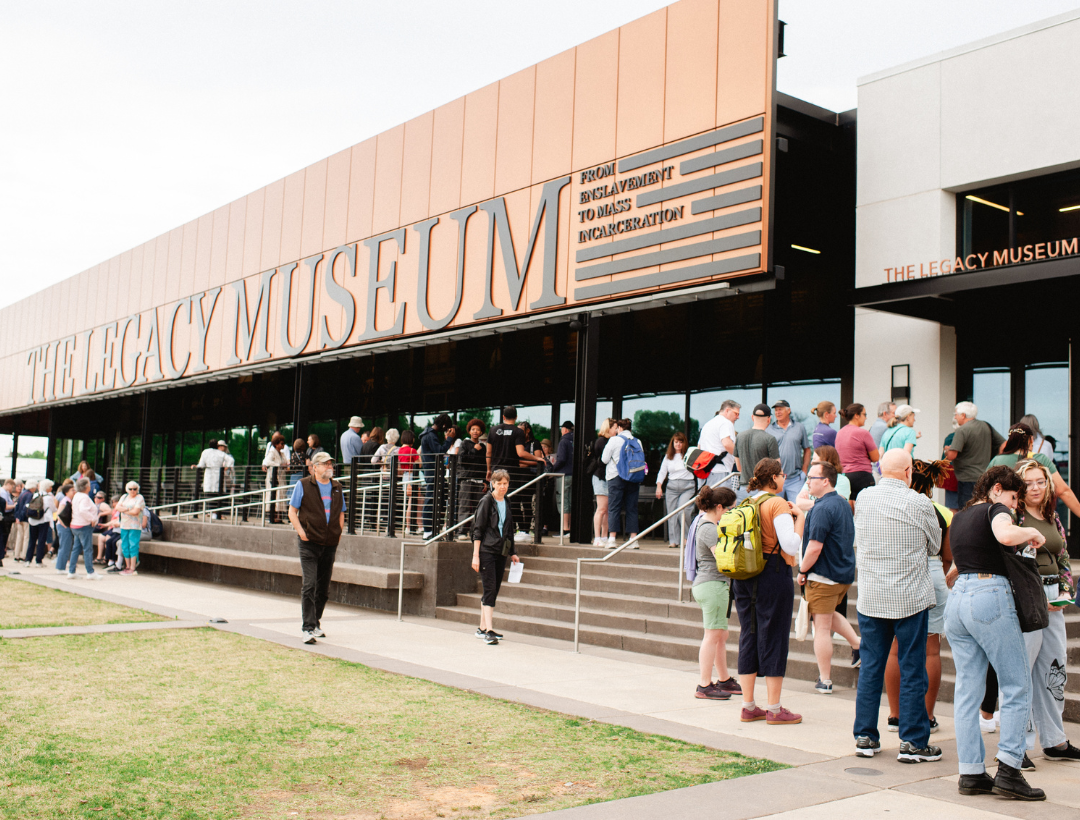History, Community and Us: Reflections on Rebuilding Together's National Staff Retreat
The Rebuilding Together national office recently traveled to Montgomery, Alabama to visit the Legacy Museum as part of our annual in-person staff retreat. The goal of said retreat was to reconnect the national staff to the “why” of our work and to think strategically about our national impact and commitment to the communities we serve. One of the most prominent aspects of our time in Montgomery was our visit to the Legacy Museum.
The Legacy Museum tells the story of the history of racial injustice in America, from slavery to the mass incarceration of Black individuals. The museum offers first-hand accounts, interactive media, art, installations from the Equal Justice Initiative and more. Walking through the halls and exhibits is an overwhelming experience. During my time at the museum and the National Memorial for Peace and Justice, I remember intentionally seeking out stories from the places I grew up in the southern United States. My hometown was a major auction site during the slave trade. The county I live in now was the scene of a mass lynching and such incredible racial violence that a whole community was wiped out. In seeking out these stories, I wanted to learn and reflect on the history of the places I’ve lived, to name that violence and to recognize how that history brought us to where we are today.

However, racial violence and discrimination are not just something that happened in the places that raised me. Anti-black movements occurred all over the United States throughout history, leaving behind a legacy of historical discriminatory practices, myths that underpin current anti-black rhetoric and a gateway for other prejudices and biases to persist. As a national organization that works in communities that have often survived decades of marginalization, it is especially important for us to recognize this legacy and our place in addressing the systemic issues facing our homeowners. Our work does not take place in a vacuum. Our values - teamwork, diversity, and more - ask us to actively listen to our service recipients and to each other. This visit allowed us as a national staff to live those values and to strategize on how to be a better community partner to our under-served neighbors in the future.
The thing that stands out to me now as I reflect on that experience, meeting with our local affiliate and the national staff conversations that followed, is how history is both personal and communal. We each have individual stories and experiences that make up a larger narrative, a collection of stories that weave together to make a bigger community fabric. Our work is similar; we may only enter one person’s home for repairs, but that one person is one part of a larger community. Being invited into their home means being invited into their life, their support network, their neighbors - and their history. Our work requires committing to learning that history, to connecting with local community leaders to understand their needs, to being members of the greater ecosystem for change.
Rebuilding Together continues to embody community across our work, at both the national office and with our local affiliates. It is this value of community - of connecting with neighbors, amplifying voices and inspiring change for whole neighborhoods - that gives me the most hope as we press forward as an organization.